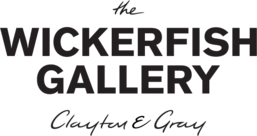
A home-made, simple outdoor art kit.
I’d like to discuss the art kit that I’ve found to be the most suitable for drawing outdoors especially when you have to carry it along with all your other walking equipment. It’s far too easy to carry a huge range of pencils, paints and brushes that in all probability will return from your drawing expedition unused. I’ve included a picture of my art kit and I have spent many happy hours using it to fill my sketchbooks. There’s not a lot to carry and for the type of sketches I enjoy producing, it is more than adequate.

So, in detail, and using the photograph as reference, with the exception of the water container, the A6 sketchpad and the saucer, everything fits in an old metal pencil box that in turn fits comfortably into my jacket pocket. The box has a tray which has nine, half pan, watercolours fixed in place using double sided tape.
My basic palette is Cadmium Red, Cadmium Yellow, Ultramarine Blue, Burnt Sienna and Burnt Umber. I’ve found these to be perfect for every colour mix that I need whilst I’m outdoors. They are student quality, in the main, which I have found very suitable in terms of price and availability. Should I run out of a particular colour then I simply refill the empty pans with tube watercolours, let them dry overnight and then carry on! I’ve added four other colours, Cobalt Blue, Prussian Blue, Paynes Grey (a beautiful storm cloud grey) and Yellow Ochre purely because I like using them. And they suit landscape paintings in general. Choose your own extra colours dependant on your chosen subject matter.
I carry two brushes, both synthetic, a Number 8 and a Number 4, one of which has been cut down to fit into the tin. For my style of painting, I’ve found these to be perfect. I also carry an old toothbrush which is great for applying texture to paths and stone walls.
As a water container I simply raided the kitchen cupboard for a small plastic tub which was light and tough; it does the job admirably. As a palette I use a white china saucer and again I find it works really well; it holds enough paint for the way I work and, because it’s heavier than a plastic equivalent, it doesn’t tend to blow away in a strong breeze.

The two pencils I use are a Conte of Paris 2B and a Steadtler 2H, both grades hark back to my college days and were recommended to me by my lecturers years ago; old habits die hard. Again, I find these pencils do the job admirably; I cover the points, to protect them, with a small metal bullet case which cost approximately 75p each. As a sharpener, rather than use a pencil sharpener, I carry a scalpel with a 10A blade and spare blades. I’ve found the knife to be far better in producing a good drawing point on my pencil; a normal sharpener can twist and break the lead. You can also use the scalpel to ‘scratch out’ areas in your watercolour for added texture and to produce sharp highlights. For safety reasons I push the blade of the scalpel into a white plastic eraser, which obviously can also be used to correct any errors you make while drawing as well as being another mark making tool to create white areas on a graphite shaded page.
Finally, I carry a water soluble ‘black fine liner’ and a ‘Chinese white’ pastel pencil which used in combination with toned paper can produce some excellent results.
The sketchbook I use is an A6 cartridge paper filled, hard backed sketchbook by ‘Pink Pig’. They have good quality paper, capable of taking watercolour successfully and, for the wandering artist, it fits conveniently in the back pocket of my jeans.
Lastly, when everything is packed away in the pencil tin, I have marked the lid with three red dots to indicate which way up to carry it; there’s nothing worse than opening your kit to find your brushes are bent in a permanent curve. This goes some way to making sure this doesn’t happen.
So there it is, a fairly economical art kit, custom made to your own requirements, light and fairly hard wearing which should give you many happy hours of drawing and painting while enjoying the scenery of your favourite walk.
In my next post I will discuss ‘what to look for in a drawing and what to leave out!’
See you soon.
Stuart Gray


